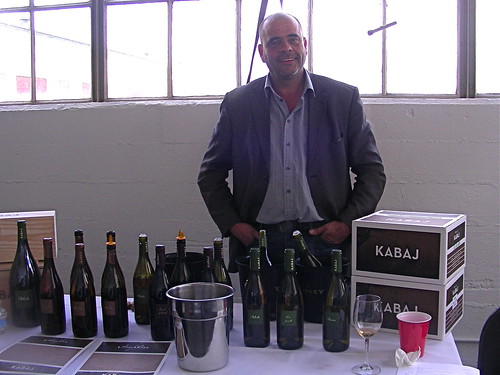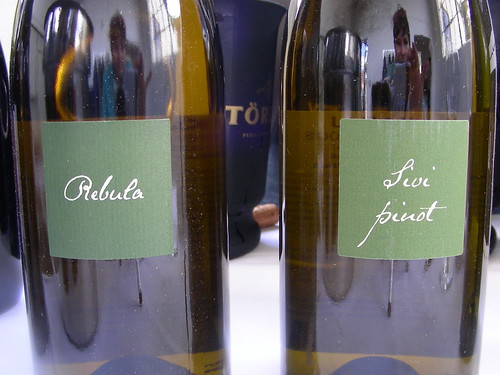
Jean-Michel Morel of Kabaj winery
With his wife Katja Kabaj, Jean-Michel Morel is the owner of Kabaj, a winery located in Goriška Brda, a wine-growing region in western Slovenia, near the Italian border. It was one of the first regions in Slovenia to establish an international reputation for the quality of its wines. Thanks to the Adriatic sea, the area enjoys a Mediterranean climate with constant dry winds called "Bura" that reduces the need for fungicides and pesticides. The soil is principally composed of ocean sediment and is rich in marlstone, slate claystone, and limestone.
The Kabaj family has farmed vineyards in Goriška Brda for generations and used to sell their grapes to the Yugoslav state. But in the early 1990s, Katja Kabaj and Jean-Michel Morel decided to release their own wines under the Kabaj family name. They own 55,000 vines farmed sustainably and fertilized with horse manure, 70% of which are white varieties, including indigenous Rebula (Ribolla Gialla), Sauvignonasse (Tokai Fruilano), and Malvasia Istriana. Red grape varieties are also grown, mostly Merlot, Cabernet Franc, and Petit Verdot. The winery has a modern cellar built a few years ago.

I tasted the folowing wines:
• 2008 Kabaj Sivi Pinot: 100% Pinot Grigio, aged 12 months in French oak barrel, followed by 4 months in bottle. Yellow color, floral acacia nose, medium bodied on the palate, less acidic than a Italian Pinot Grigio.
• 2008 Kabaj Ravan: 100% Tokai Fruilano also known as Sauvignon Vert or Sauvignonasse, a grape variety believed to have originated in the Veneto region. Aged 12 months in French oak barrel, followed by 4 months in bottle. Yellow color, floral nose, soft on the palate with fresh peach aromas.
• 2008 Kabaj Rebula: 100% Ribolla Gialla, a white grape variety mostly found in the Friuli-Venezia-Giulia region of northeast Italy and in Slovenia where it has been grown since the 13th century. The wine is fermented on the skins for 30 days then aged 12 months in French oak barrel, followed by 4 months in bottle. Golden color, aromatic nose of herbs and mineral notes. Quite spicy and complex on the palate. My favorite among the whites.
• 2006 Kabaj Cuvée Morel: 60% Merlot, 18% Cabernet Sauvignon, 18% Cabernet Franc, and 4% Petit Verdot. Aged 36 months in French oak barrels then 4 months in bottles. Dark garnet color, nose of dry herbs, medium-bodied, some tannins on the palate, needs to open up.
• 2007 Kabaj Merlot: 100% Merlot. Aged 24 months in French oak barrels then 4 months in bottles. Dark color, aromatic nose, aromas of blackberries and cherries, medium-bodied, quite dry with some tannins. Not jammy at all but more fruity than the Cuvée Morel, very food friendly.
The last 3 wines of the tasting were the most interesting and intriguing. They were vinified and aged in 3000 liter clay jars buried underground called kvevri, using ancient Georgian winemaking practices. After being aged in the jars for 10 months on the skins, the wine goes without the skins into oak barrels for 12 months and aged for 12 additional months in bottle. During aging, 25% of the wine is usually lost to evaporation.
• 2005 Kabaj Amfora: dark yellow color, floral nose, concentrated and tight on the palate, not really fruity, rather spicy and quite complex.
• 2006 Kabaj Amfora: much more open than the 2005. Nice floral nose and additional notes of peach and apricots. Quite distinguished and really delicious.
• 2007 Kabaj Amfora: more austere than the 2006, similar in style to the 2005.
Technorati tags: wine food & drink
No comments:
Post a Comment